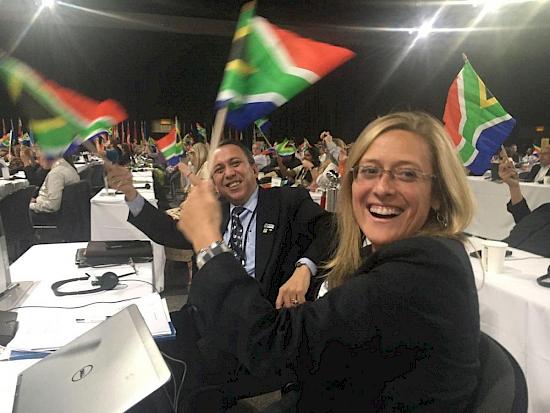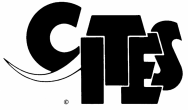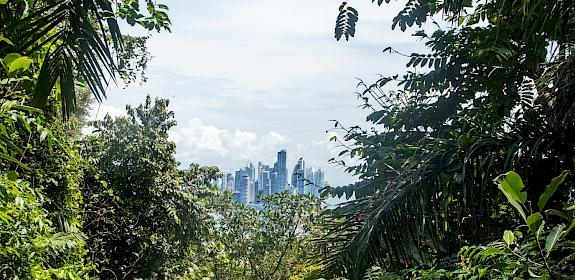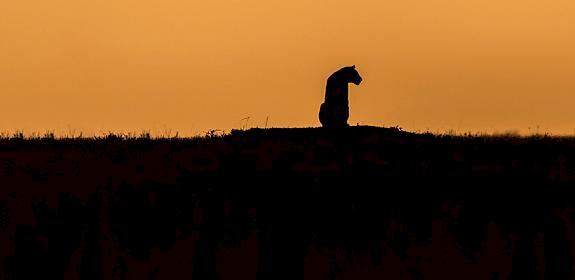Positive outcomes from global wildlife trade conference, but much work needed to halt unsustainable and illegal trade
Johannesburg, South Africa, 4th October 2016—Just under two weeks of intense inter-governmental negotiations on regulation of trade in wild animals and plants concluded today with some significant steps forward for global efforts to stamp out illegal wildlife trade and ensure sustainability of future trade in a range of valuable species.
The 17th Conference of the Parties to the Convention on Trade in Endangered Species of Wild Fauna and Flora (CoP17 CITES) closed a day early after governments reached consensus on many of the issues on their agenda from the past two weeks.
Overall this was a very positive meeting, with important steps forward made on a whole range of wildlife trade issues. There was significant progress on issues relating to captive breeding, synthetic products, demand reduction, traceability, cybercrime and even corruption, as well as the higher profile species
Steven Broad, Executive Director of TRAFFICOn captive breeding, governments endorsed a new resolution to address issues relating to the laundering of wild-caught species into legal trade.
Parties also agreed on the need to determine how best to regulate bioengineered products derived from CITES listed species to ensure that they have no detrimental impact on wild populations.
Demand reduction featured heavily: a new resolution called for well-targeted, evidence-based methods to bring about consumer behaviour change.
“Enforcement efforts to stem poaching and trafficking may be futile without complementary efforts to reduce demand for illegal products,” said Gayle Burgess, TRAFFIC’s Consumer Behaviour Change Co-ordinator.

For the first time in this forum there was also open and constructive discussion of how to address the impact of corruption in undermining wildlife trade regulation.
The topic of traceability was also examined—as Glenn Sant, TRAFFIC’s Fisheries Programme Manager said: “Traceability holds the key to strengthening the backbone of sustainable and legal trade in a variety of products such as sharks and reptile skins —it’s all about feeling confident that when you read the fine print it tells you the products are legal and sustainable.”
Four species of sharks – the Silky and three thresher sharks – and nine species of Mobula rays were all included within CITES Appendix II: their inclusion followed reports of favourable implementation of the listings for a number of shark and ray species at the previous CITES CoP meeting in Bangkok, Thailand.
One of the most significant, though largely unreported outcomes was for regulation of the commercial international trade in a variety of timber species—a number of which were listed in Appendix II including all those within the genus Dalbergia, several of which are commercially traded as “rosewood”.
“Now these species are listed, the hard work of ensuring the sustainability of the trade in these valuable timber species can begin,” said David Newton, TRAFFIC’s Regional Director for East and Southern Africa.
Good progress was also made with conservation measures for flagship endangered species banned from trade under CITES—elephants and rhinos in particular.
For elephants, there was a backing for the streamlining the effective implementation of the CITES-led National Ivory Action Plan process, whereby governments have been requested to develop plans to address the illegal flow of ivory along the trade chain. There was also a decision taken calling for governments to phase out domestic ivory markets. Earlier, TRAFFIC and WWF released In Transition: Bangkok’s ivory market, a report which reported a huge fall in the amount of ivory openly for sale in Thailand’s Bangkok markets over the past two years. The controversial proposals relating to the Appendix listings for African Elephants were all defeated, leaving the status quo whereby international commercial ivory trade remains prohibited.
On rhinos, the pressure was maintained on two of the countries most heavily implicated in the illegal rhino horn trade: Mozambique as a transit and exit point for horn leaving Africa and Viet Nam as the principal end-use destination. A proposal from Swaziland to legalize rhino horn trade was defeated in light of widely held concerns about the intensity of current illegal markets, although the proponent raised important questions regarding the very real challenge of financing conservation action to protect their rhinos and other wildlife.
TRAFFIC released Skin and Bones Re-examined a report which noted that at least 30% of the Tiger seizures from 2012-2015 came from captive breeding facilities. Governments later took a decision taken to scrutinise trade from such operations, and Lao People’s Democratic Republic (PDR) announced it would be phasing out its Tiger farms.
At the start of the meeting, Lao PDR had come under scrutiny for its role in wildlife trafficking: two TRAFFIC reports into the trade in Helmeted Hornbill and pangolins respectively added further evidence to the debate.
And it was pangolins that were the subject of perhaps the most widely reported Appendix change listings: all eight species were included within Appendix I of the Convention, which will prohibit their commercial international trade. The move came following evidence of rising illegal trade and reports of populations declines across Asia causing increased illegal trade in African species.
“Some important decisions were taken in Johannesburg this past fortnight: it’s now down to the governments who made them to ensure they are adequately implemented,” said Broad.
Convention on International Trade in Endangered Species of Wild Fauna and Flora (CITES)

The Convention on International Trade in Endangered Species of Wild Fauna and Flora, is an international agreement between governments that aims to ensure that international trade in specimens of wild animals and plants does not threaten their survival. Find out more here.




